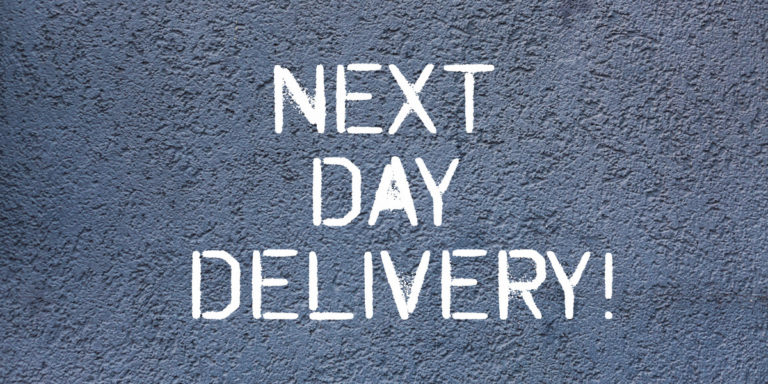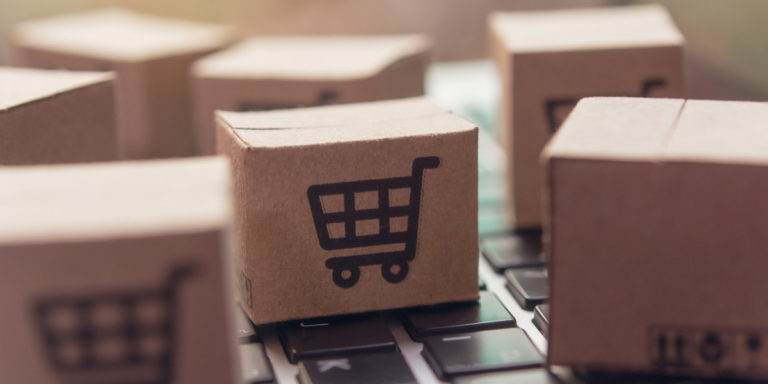It’s a real dilemma for online retailers and brands — on one hand, they genuinely want to make moves towards becoming more sustainable, but pulling the plug on next-day deliveries feels like giving their customers a not-so-gentle nudge towards the nearest exit. It’s a confusing time for brands, and it’s easy to see why. We’re constantly being told that customer expectations are rising, and exposed to stats about how shoppers want next-day deliveries (or even same-day deliveries, but that’s another day’s work!) In the same breath, we’re hearing more about how consumers want deliveries to be more eco-friendly, and that if you want to retain existing customers and attract new ones, you need to take immediate action.
So can next-day deliveries and sustainable brands co-exist, or do retailers need to pull the plug on speedy deliveries entirely if they want to be considered authentically sustainable businesses?
Spoiler alert — there’s no ‘one size fits all’ answer. The reality is that next-day deliveries do have an impact on the environment. Would eCommerce as a whole be more sustainable if no online brands offered expedited shipping on products? Of course. But that’s neither realistic nor is it necessary.
Sustainability is a spectrum. For example, is a small online pharmacy that offers next-day delivery to customers, but doesn’t offer free returns less sustainable than a global fast-fashion brand that doesn’t offer next-day delivery but lets customers return items for free?

It’s also a long game, and even though consumers want brands to become greener, real change can only happen when they change their own behaviour. The most effective way for brands and customers to meet in the middle when it comes to sustainable shipping is through education.
In one particular survey, consumers were asked if they were aware that expedited shipping, such as Amazon Prime’s free next-day delivery cause more carbon emissions than standard/longer delivery services. Half of the respondents admitted to not knowing this. Clearly there’s a disconnect going on. So if you want to still offer customers next-day delivery as an option on your online store, that’s your prerogative. Think of the example of the online pharmacy — there’s a legitimate need for that business to deliver products to customers in a very short timeframe. But does this mean that the brand can kiss sustainability goodbye altogether? Not at all.
Here are some things that all businesses can do to help next-day deliveires and sustainability co-exist:
Talk to your customers
Expectations and demands aside, your customers might just surprise you in terms of what delivery options they are willing to choose. So talk to them. Let’s take the online pharmacy as an example again. The team could easily send out an email to their customer database advising them that they are taking steps towards becoming a more sustainable business (reducing packaging, offsetting carbon emissions, etc). However, as of right now, they will continue to offer next-day delivery as a shipping option because many customers need to receive orders that contain medicine quickly. They could also take the opportunity to educate customers on the carbon emissions that could be saved if they choose 2-3 day standard shipping over next-day. Finally, they could include a poll asking customers how important next-day delivery is to them to help them future plan their sustainability strategy.
Being upfront about your sustainability efforts and showing your customers that you are doing the best you can is often far more impactful than switching off a delivery option and calling it a day.

Offer Alternatives to Next Day Delivery
While speedy deliveries have a huge part to play in the environmental impact of eCommerce, failed deliveries really have a lot to answer for. Last year, delivery vans in the UK pumped out 355,987 tonnes of CO2 from failed deliveries. A tremendous amount of carbon waste for packages that didn’t get delivered the first time around. So perhaps brands could still offer next-day deliveries, but also offer alternative options, such as timed-delivery slots or local pickup to encourage customers to choose a shipping method where they are most likely to receive it in the first instance, while helping to clean up last-mile in the process.
Once again, it’s vital to make customers aware of the implications of choosing one delivery method over another, so clearly communicate why accuracy is more sustainable than speed on your delivery/shipping and checkout pages.
Focus on Reducing Returns
The average return rate for eCommerce brands is somewhere between 20-30%. If your return rate is much higher than this, you may have bigger fish to fry than cutting out next day deliveries. Returns are always going to be inevitable. However, if it’s too easy for customers to send back items, you’re reducing friction, but you could also be inadvertently contributing to wardrobing. The same challenge occurs in that you don’t want to cut out free returns because it might send customers straight to your competitors. But maybe you could continue to offer next-day delivery, but apply a charge to returned orders. Or perhaps you could shorten the returns window, making your customers aware that you are doing it because of the impact that returns have on the environment.
While it may seem like brands who offer next day delivery couldn’t possibly be considered ‘sustainable’, it really doesn’t have to be the case. Using education to change expectations is what will make customers choose the most sustainable delivery options in the longrun — not because they don’t have an alternative option, but because they want to do the right thing.
Want to know how Scurri can provide next day delivery as well as other delivery options to your customers at the checkout Talk to us today!

AUTHOR
Michelle McSweeney Content Marketer
